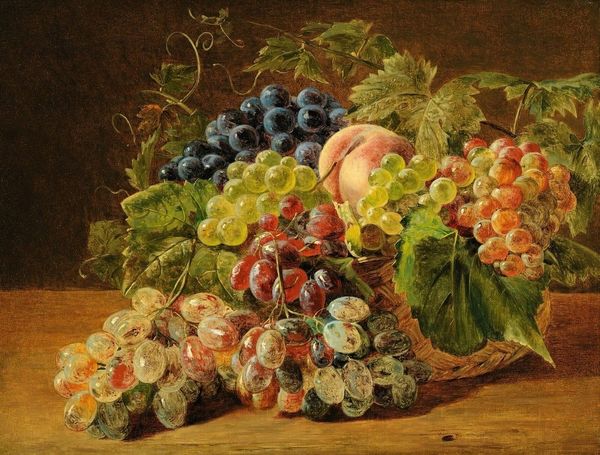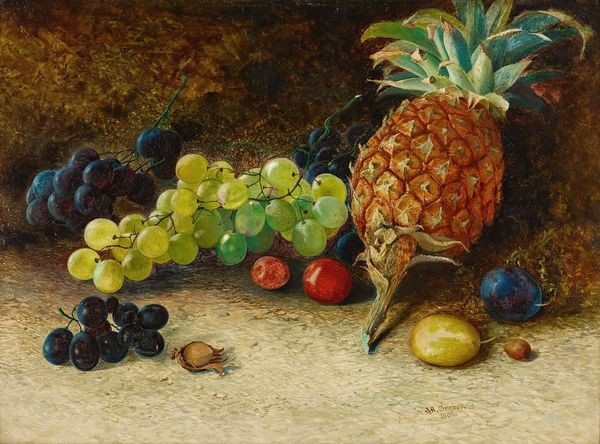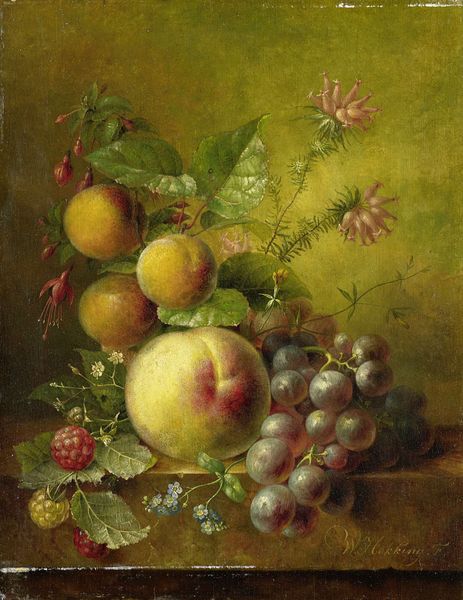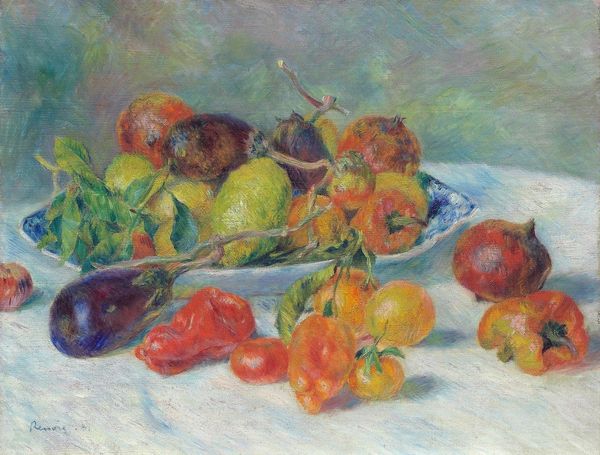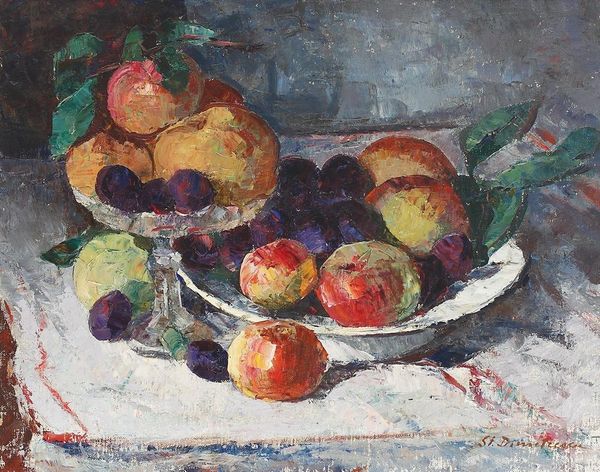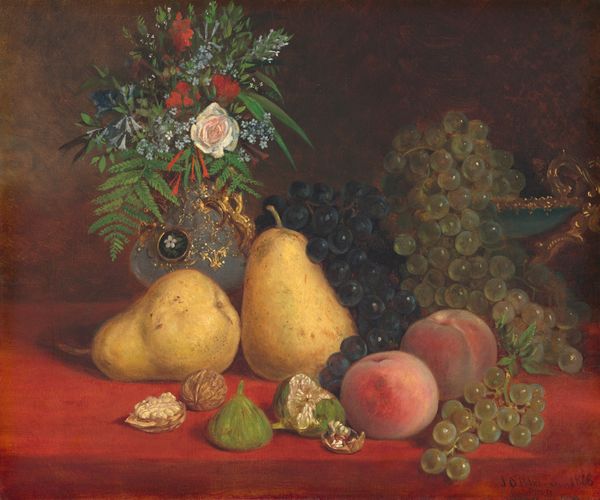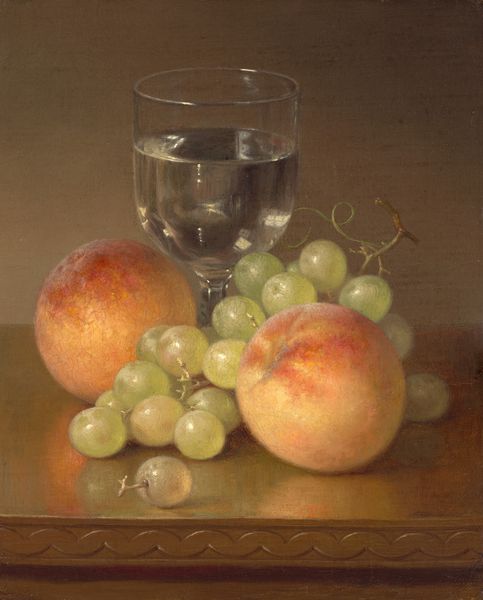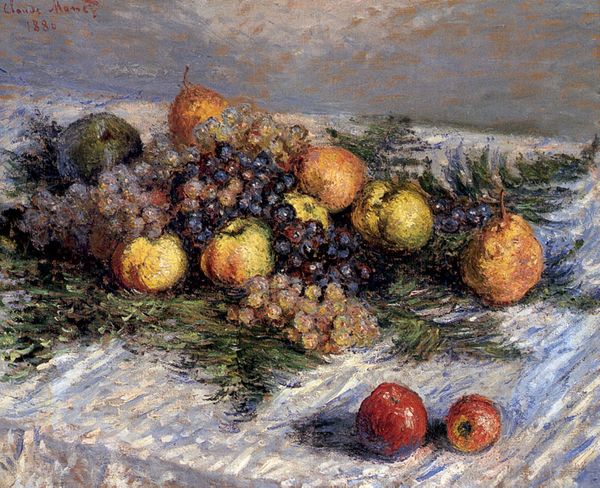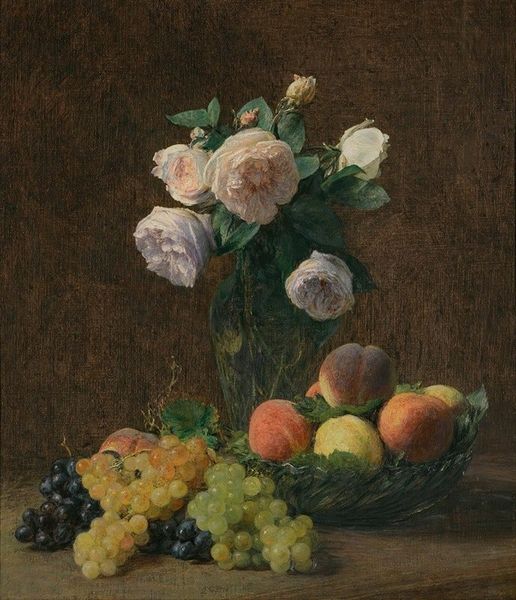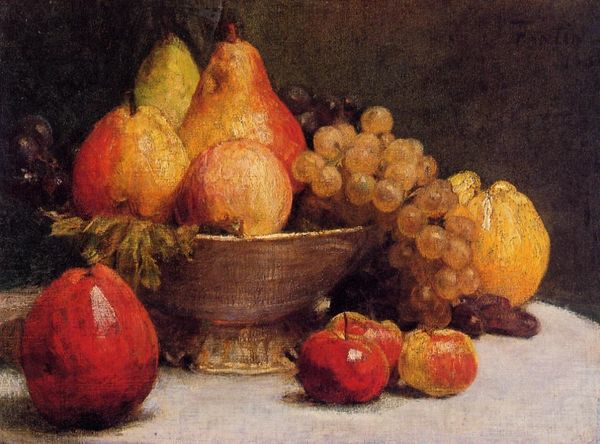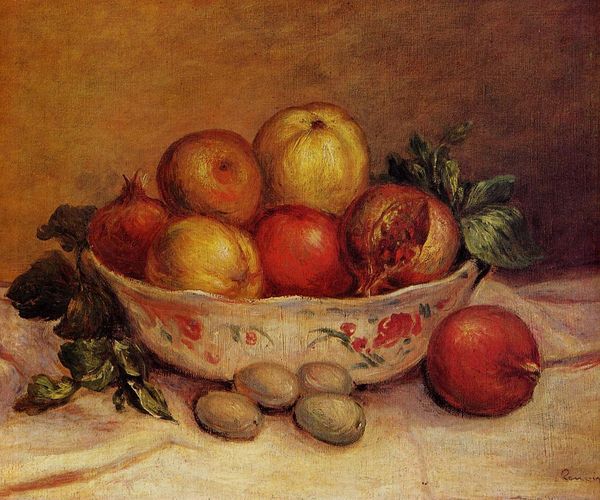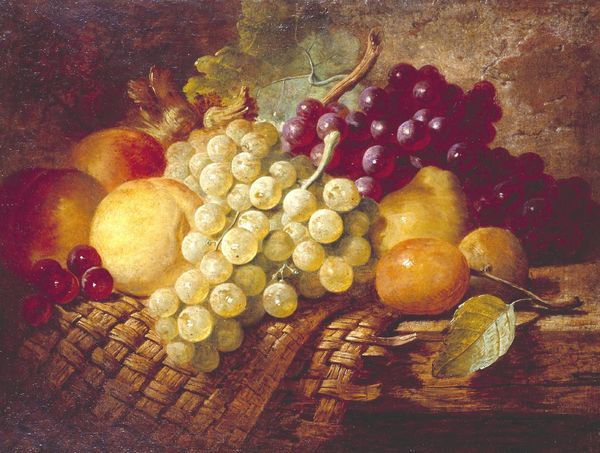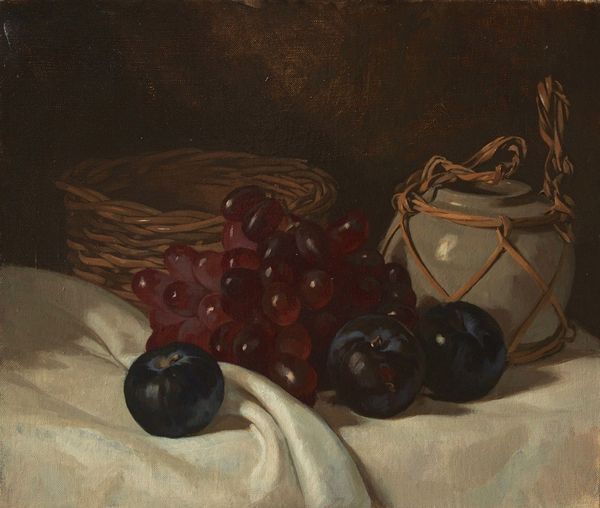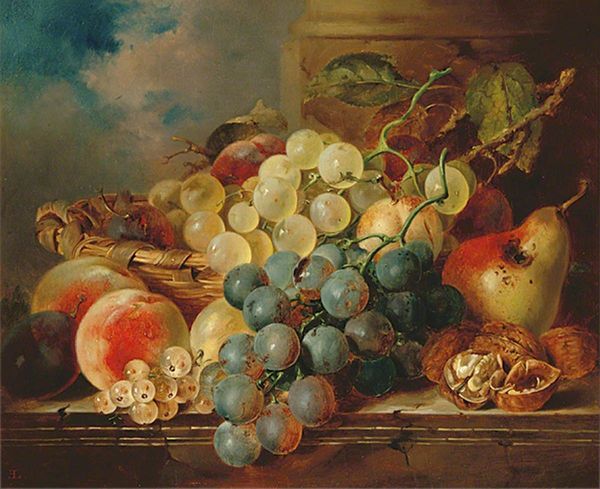
Dimensions: support: 216 x 273 mm
Copyright: CC-BY-NC-ND 4.0 DEED, Photo: Tate
Curator: William Henry Hunt, born in 1790, painted this watercolor still life, simply titled Fruit. It's part of the Tate Collection. Editor: The colors are so muted, almost melancholic. It’s not the vibrant celebration of bounty I usually associate with fruit paintings. Curator: Still life paintings, especially in the 19th century, carried symbolic weight. The arrangement, the selection of fruits, would have signaled ideas about prosperity or mortality. Editor: I wonder if the plums, with their bruised hues, are a memento mori—a reminder of life’s transience. The crisp grapes and bright orange offer a counterpoint of vitality, though. Curator: Perhaps. Hunt’s skill lies in capturing the texture and light on each piece. The fruits become emblems of a particular moment, elevated beyond mere objects. Editor: It’s interesting how a seemingly simple subject can hold so much emotional resonance. I find myself lingering on the single plum that has fallen away from the rest. Curator: Precisely. It speaks to a visual language, a quiet contemplation of beauty and time that endures. Editor: It makes you think about how art can imbue the everyday with meaning.
Comments
Join the conversation
Join millions of artists and users on Artera today and experience the ultimate creative platform.
tate 6 months ago
⋮
A special technique was essential for Hunt’s fruit pieces and bird’s nests, which became greatly esteemed by collectors. He devised a new process which involved mixing gum with Chinese white and laying this as a hard priming on which he would then paint or stipple in pure watercolour. This enabled him to obtain the much admired ‘bloom’ on peaches, plums and grapes This technical invention shows how close a link was forged between Hunt and later Victorian artists such as JF Lewis and the Pre-Raphaelites, with their insistence on detail and almost obsessively high degree of finish. Gallery label, August 2004
